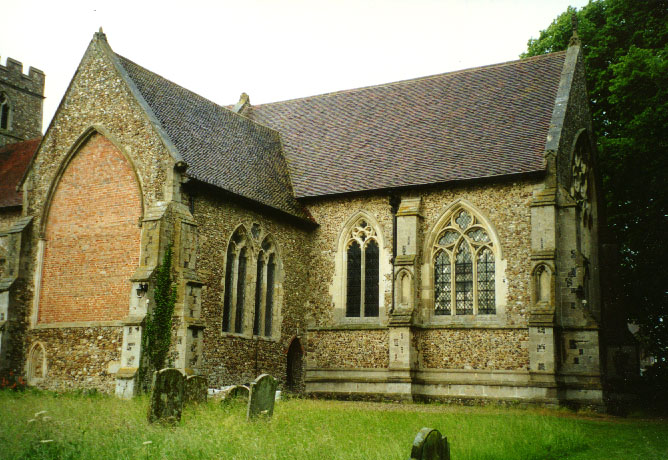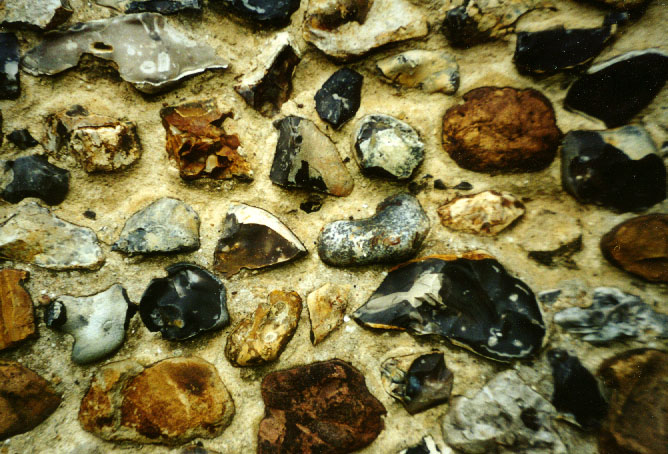
The chert nodules are easy to obtain, but they are difficult to manage as a building stone. Note that in the example above from Great Sampford (southeast of Cambridge), as well as in another example from Stow-cum-Quy, the chert nodules are never used to form corners, but only to fill walls between corners made of other stone. Chert can't be broken predictably and is extremely hard to cut, so it can't used to make corners effectively. Instead, the nodules have to be "framed" at corners of buildings with more workable stone.
The use of chert nodules as a building stone is restricted to those areas where chert nodules are abundant from weathering of the Chalk. For a geologist, the use of chert as a building stone and its easy recognition as such mean that one could map the outcrop area of the Chalk simply by motoring across the countryside and noting the presence or absence of buildings with chert nodules. Combined with an occasional stop for scones and tea or filled rolls and ale, this could be one of the most enjoyable forms of geologic mapping ever envisioned.
